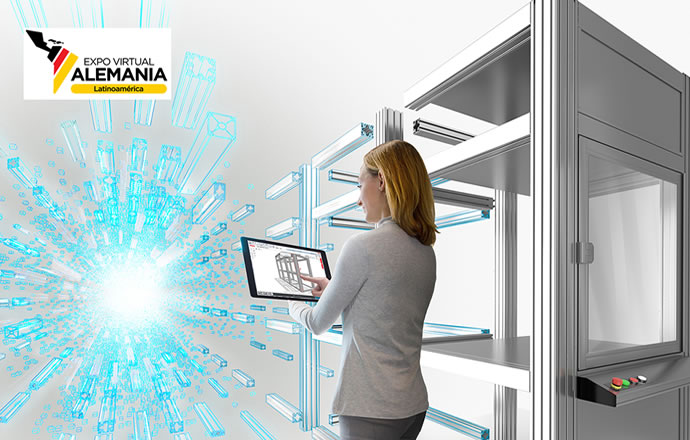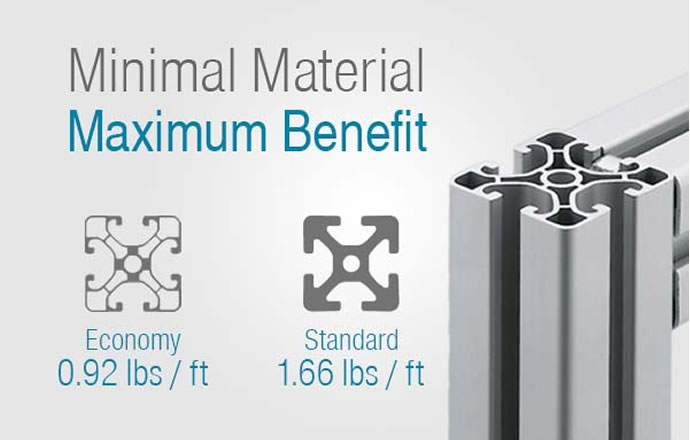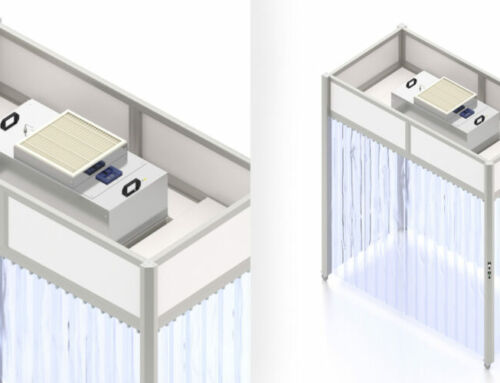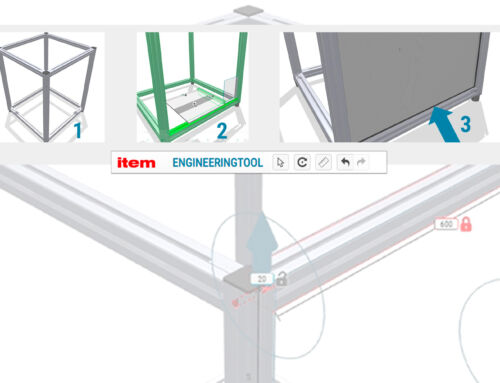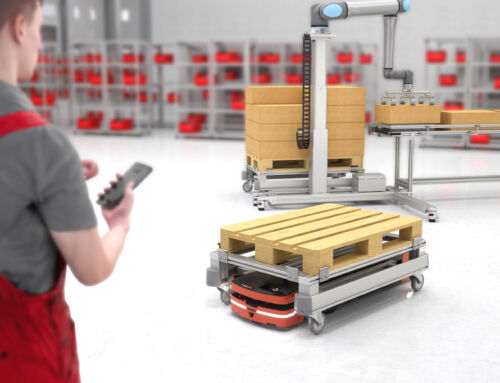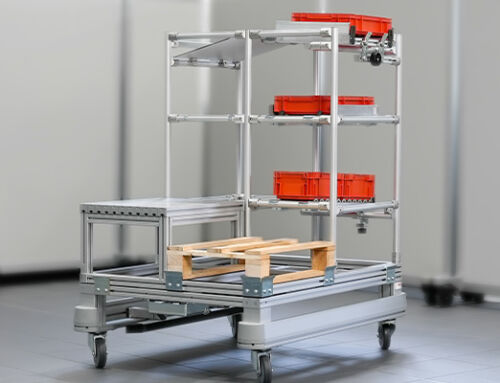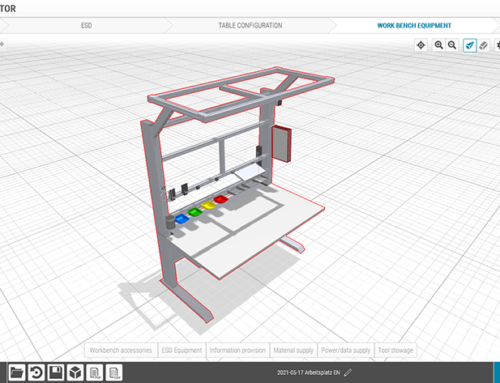With the right software, you can make the most of resources and material areas, design custom racks and cut out waste to effortlessly optimize material supply in assembly and production.
Regardless of whether or not industrial companies take advantage of lean production methods to enhance their operations, lean production’s core objective of eliminating waste is highly relevant to each and every business. The reason for this is simple: Less waste leads to greater efficiency. In the majority of cases, waste can be boiled down to one and the same thing – time. The more time is wasted, the less value is created. Wasted time can take various forms, including unnecessarily complex manufacturing processes, avoidable movements in assembly, and long, frequently travelled routes for transporting materials. By efficiently planning material zones and consequently optimising the supply of materials, companies can alleviate or even avoid many of these issues.
What does material supply optimization involve and what’s it good for?
Material supply in assembly and production refers to the systematic, efficient and ergonomic provisioning and picking of materials on an assembly line or in manufacturing operations. Among other things, this is achieved by using perfectly customized containers and racks and strategically positioning them on the material areas – not to mention engineering the appropriate factory equipment. The aim of all this is to keep transport routes and lead times to an absolute minimum. Well-planned material zones and optimum factory equipment help make this a reality. The better and greater use made of the space available, the more efficient assembly and production processes become. For example, let’s imagine there are a few unused square meters next to a flow rack. On the face of it, this space might seem somewhat insignificant. Yet if this area is used to extend the rack so it can accommodate another row of small load carriers, it will not have to be restocked as often. As a result, staff will have more time on their hands for value-adding activities and efficiency will increase.
In other words, even seemingly unimportant improvements boast a great deal of potential, but they also require in-depth planning. This is because besides factoring in aspects such as ergonomics, the type of material, supply concepts and the surface area and space available, companies need to design and commission the necessary, perfectly tailored factory equipment. It’s a worthwhile process, but one that takes up a lot of time. Luckily, planning and optimization software such as ipolog make the work involved a whole lot easier. This software uses intelligent algorithms to help optimize material supply processes in assembly and production operations, thereby significantly reducing the amount of time required for planning. 2D and 3D visualizations give an idea of what the end result will look like and make it easier to coordinate with fellow co-workers, decision-makers and service providers.
Material supply planning – with the integrated item Engineeringtool
To ensure visualizations and plans are as accurate and clear as possible, it’s also important to take into account the factory equipment in place. Technically, this can be done using placeholders, but a far more elegant and efficient method is to start working straightaway with true-to-scale representations of the actual factory equipment used. For this purpose, existing 3D models of racks, containers, environments and other objects can be imported from CAD programs, or models can be added straight from the catalogue in the ipolog software. The planning process is particularly easy and convenient when using factory equipment based on the item Lean Production Building Kit System. Standard FIFO racks from item can be accessed directly in the software’s catalogue. What’s more, the item Engineeringtool is connected to ipolog, which offers a multitude of advantages.
Thanks to the connection to the Engineeringtool, users of the software can open their chosen templates and designs with just one click and tweak and customize them with milliliter precision. ipolog then automatically recognizes roller conveyors, for example, and thus knows how many small load carriers will fit into a designed rack. This makes extending a flow rack such as the one mentioned earlier an effortless undertaking. Once the planning is done and dusted, the customized factory equipment can be ordered directly via the item Online Shop. In other words, using such software to plan material supply processes pays off. This approach ensures you achieve your goals faster, delivers better results thanks to smart algorithms, and makes it easier to procure and integrate factory equipment. A whole host of steps become more efficient, space is used to its full potential and waste is reduced. This is exactly what optimized production is all about.
